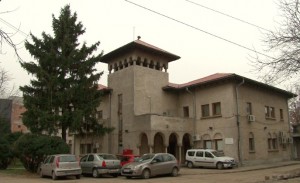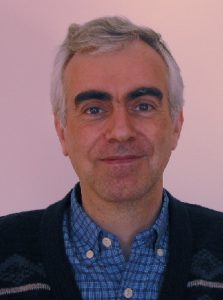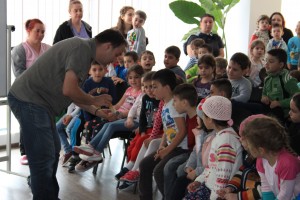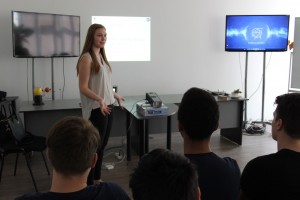 The Institute of Space Science is carrying out fundamental and advanced scientific and engineering research in Cosmic Space Physics, High Energy Physics and related fields, based on the previously acquired own experience and international collaborations. The Institute’s R&D activities are based on the concept of covering all experimental and theoretical stages: equipment development, data processing and interpretation, theoretical researches and cosmic space utilization.
The Institute of Space Science is carrying out fundamental and advanced scientific and engineering research in Cosmic Space Physics, High Energy Physics and related fields, based on the previously acquired own experience and international collaborations. The Institute’s R&D activities are based on the concept of covering all experimental and theoretical stages: equipment development, data processing and interpretation, theoretical researches and cosmic space utilization.
space science
Seminar about „Euclid and the Dark Universe”

Guest: Prof. Dr. Yannick Mellier, Institut d’Astrophysique de Paris, Sorbonne Universite, Paris and CEA/IRFU/DAp Saclay, France
When: April 16th, 2018, 11h00
Where: Institute of Space Science – ISS (Auditorium)
Abstract:
The ESA Euclid space mission aims to understand why the expansion of the Universe is accelerating and pin down the source responsible for the acceleration. It will uncover the very nature of dark energy and gravitation by measuring with exquisite accuracy the expansion rate of the Universe and the growth rate of structure formation in the Universe. To achieve its objectives Euclid will observe the distribution of dark matter in the Universe by measuring shapes of weakly distorted distant galaxies lensed by foreground cosmic structures with the VIS imaging instrument. In parallel, Euclid will analyse the clustering of galaxies and the distribution of clusters of galaxies by using spectroscopy and measuring redshifts of galaxies with the NISP photometer and spectrometer instrument. The Euclid mission will observe one third of the sky (15,000 deg2) to collect data on several billion galaxies spread over the last ten billion years. In parallel to the space mission, the Euclid survey also comprises photometric and spectroscopic observations that will be used jointly with the Euclid satellite data to get photometric redshifts of all lensed galaxies. Altogether the Euclid data set will be an exceptional gold mine for cosmology and fundamental physics but also for all fields in astrophysics. In this presentation will describe the scientific objectives of the mission, the organisation of one of the hugest and most complex space consortium as well as the technology necessary to build the experience. Finally, I will present the most recent forecasts and constraints on dark energy, gravity and dark matter as well as the expectation for the physics of inflation or neutrinos, and all other domains of astronomy.
Contact person: Dr. Lucia A. Popa (ISS) <lpopa[at]spacescience[dot]ro>
‘Școala Altfel’ la Institutul de Știinte Spațiale
 Institutul de Știinte Spațiale (ISS) și-a deschis și anul acesta ușile pentru elevi, dascăli și parinți însoțitori, alăturâdu-se astfel Programului Ministerului Educației Naționale și Cercetării Stiințifice – Săptamâna Școala Altfel “Să știi mai multe, să fii mai bun”, pe întreaga perioadă 18-22 Aprilie 2016.
Institutul de Știinte Spațiale (ISS) și-a deschis și anul acesta ușile pentru elevi, dascăli și parinți însoțitori, alăturâdu-se astfel Programului Ministerului Educației Naționale și Cercetării Stiințifice – Săptamâna Școala Altfel “Să știi mai multe, să fii mai bun”, pe întreaga perioadă 18-22 Aprilie 2016.
O echipă de tineri cercetători din cadrul ISS, precum și studenți colaboratori ai Facultății de Fizică, Universitatea București, împărtășesc cu entuziasm și devotament câte puțin din tainele activităților lor zilnice de cercetare. Astfel, Școala Altfel la ISS conține prezentări cât mai diverse, precum experimentul ALICE de la acceleratorul de particule de la LHC-CERN, Observatorul de radiații cosmice Pierre Auger din Argentina, observații în emulsii nucleare la microscop, observații solare prin telescop, observații ale conținutului unei picături de lichid cu ajutorul unui laser, explorarea interactivă a Sistemului Solar și a spațiului cosmic, respectiv vizită la Centrul de Calcul al Institutului de Știinte Spațiale.
Comunicările științifice sunt adaptate vârstei copiilor, astfel incât lecțiile interactive să fie cât mai atractive și cu un grad de noutate sporit pentru a le permite valorilor noastre – cercetătorii de mâine să-și imbogățească bagajul de cunoștințe din domeniul științei și tehnologiei. Astfel, copiii, de la mici la mari, pot deveni cercetători pentru o oră sau astronauți pentru un minut!












